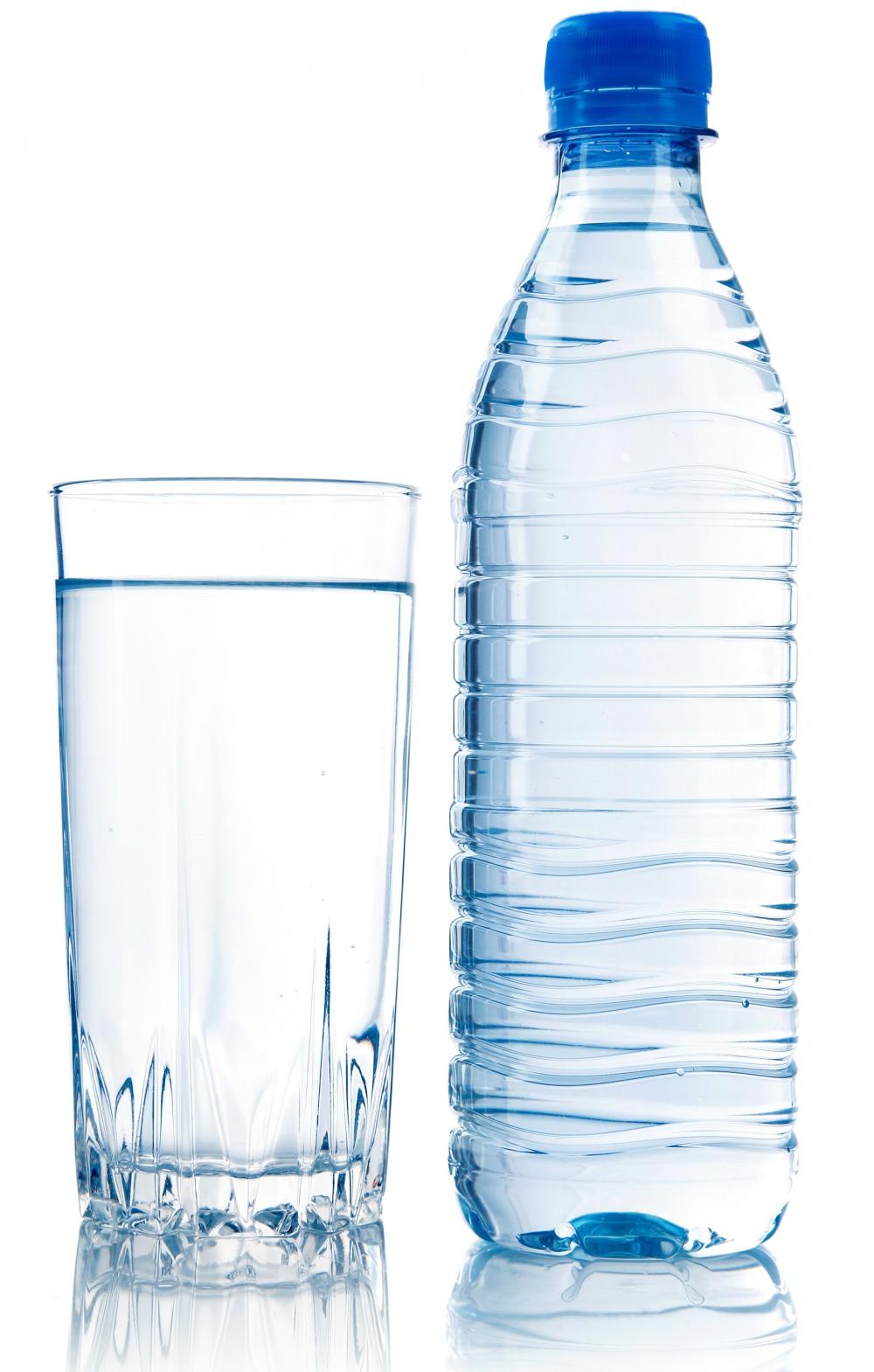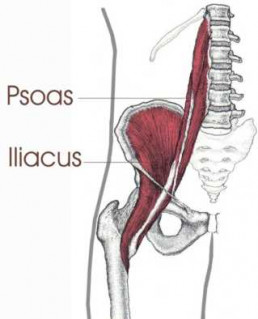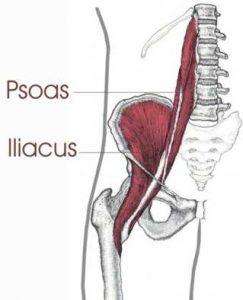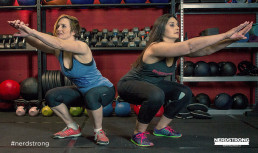Fighting Food Cravings
Cravings are a common hurdle to fitness in a world where unhealthy choices are often the easiest. The leftover box of donuts in the staff room or the candy by the checkout counter are so convenient and appealing. How can we make good choices when our bodies call out for something we know is unhealthy?
DRINK WATER & SLEEP

When we are low on energy or dehydrated, our body reacts by making us crave foods that will give us energy! Usually, we reach for foods high in carbs and sugar. If you are thinking about snacking, drink a glass of water first to see if that's what your body really needs. Make sure that you are getting enough sleep, or if you can't get your 8 hours, try drinking unsweetened tea or black coffee to give you a boost without adding to your sugar intake.
EAT MORE FREQUENTLY
There is a difference between emotional cravings and real hunger. Fend off hunger by spacing out your healthy meals and having planned snacks throughout the day. Be sure to measure servings and keep track of nutritional values. The idea is to eat more often, not to eat more.

EAT MORE PROTEIN
Protein is a great way to fight food cravings, because it keeps you feeling full for longer! Protein also contributes to lean muscle mass, and it actually uses up more calories just to digest it, so it’s a great option when you are working to get fit. Every meal of your day, including snacks, should include protein.
UNDERSTAND YOUR CRAVINGS
Most cravings are caused by emotional factors, like stress or boredom. Do you suddenly want candy before a meeting with your boss? Do you end up snacking while you're watching Netflix at home? Maybe when you think about your ex you binge on ice cream? Once you identify the root of your cravings it is easier to resist them. Try elevating your mood in other ways, like creating an upbeat or relaxing playlist of music to listen to whenever a food craving strikes. The songs provide an emotional release AND won't add regret to your feelings later in the day!
DISTRACT YOURSELF
Food cravings behave like waves: They build, crest, and then disappear. If you can distract yourself for a 10-15 minutes, it's very likely that your craving will subside and you will be able to move on with your day. Distractions that involved moving are especially effective. Try taking a short walk, some simple cleaning, or making a phone call to take your mind off of food.
BE PREPARED

Study your daily routines. If you get cravings every afternoon around 3pm, make sure that you are prepared! Arm yourself with healthy pre-portioned snacks so you don’t overdo it when your cravings inevitably strike. Fiber-rich or nutrient-dense snacks are longer-lasting pick-me-ups than the sugar- and fat-filled treats we tend to yearn for. Make sure to keep track of nutritional values and servings, and make sure that protein is a part of those snacks. Having these smarter snacks on hand will also help you make good choices when cupcakes or donuts unexpectedly show up at the office.
BE HONEST & KEEP TRACK
It's easy to lose track of how much we eat throughout the day. We tell ourselves that the 5 Jelly Beans we grab from the receptionist's candy jar don't count, a drink after work can't have THAT much sugar, or that having a larger portion than the prescribed serving won't really matter, but it adds up. Be honest with yourself about how much you are consuming throughout the day. A few impulsive choices can undo a lot of hard work, but remember...

TOMORROW IS ANOTHER DAY
There are times when enjoying a piece of birthday cake with a friend or sharing ice cream with your kids is worth it! Let yourself indulge sometimes! It helps keep life fun, but be sure to be honest with yourself about how often and how much you are indulging.
I wrote this article for the NerdstrongGym.com blog!
April 21, 2015
Top 5 Moves for Healthy Hips
The hips are one of the most important joints in the human body. Our hips are responsible for supporting our body weight and they are the most important point in our body for maintaining balance and for correcting the alignment of the spine to maintain healthy posture. Hips do a lot!
Unfortunately, most of us aren't very kind to our hips. We spend long hours sitting at desks or on the couch which weakens our hip muscles and starts limiting their mobility. Humans were not made to sit in a chair position for hours on end and most of us don't realize how limited our hip mobility has become until we start trying to get back in shape.
BEFORE YOUR WORKOUT:
1) THE COUCH STRETCH
Do not let the name of this stretch fool you! It is not as comfy as it sounds, but it will do wonders for stretching out your hips and improving mobility. Start with short amounts of time, such as 2 reps of 20 seconds on each leg, then build up as your comfort and flexibility increase.
2) THE HIP OPENER STRETCH
This video has a lot of information! Watch it all! The specific move we love starts at 1:55 and really works wonders to improve mobility.
3) BANDED HIP FLEX
The muscles that flex a joint are called "flexors." This move will help stretch your hip flexors and make prep them for whatever your workout throws at them!
FOR AFTER YOUR WORKOUT:
4) PSOAS MUSCLE RELEASE
The psoas muscle is one of our hip flexors. If we constantly contract the psoas due to stress, tension, or sitting for long periods of time, the muscle eventually begins to shorten leading to a host of painful conditions including low back pain, sacroiliac pain, sciatica, disc problems, scoliosis, hip degeneration, knee pain, and more. This awkward looking move helps release and relax the psoas muscles and can combat chronic lower body pain.
5) ILIACUS RELEASE
This super simple move releases the iliacus muscle which is important for flexing the femur forward. Prolonged sitting with the iliacus in a shortened state, or just the lack of stretching over time, can lead to the iliacus adapting to its shortened position and cause many lower body mobility and pain issues. (It is connected to the psoas, so do moves #4 and #5 together!)
Making time for a few minutes of mobility work before and after your workouts can be a game changer! No matter how strong you become, you will not be able to do most movements correctly without muscle mobility. Make these five moves a part of your regular routine and your hips will be healthy and happy!
I wrote this article for the Nerdstronggym.com blog!
April 8, 2015
Surviving Girl Scout Cookie Season
IT'S FEBRUARY, AND THAT MEANS THAT YOUNG GIRLS ALL OVER AMERICA ARE TRYING TO RUIN YOUR HEALTHY DIET... I MEAN, SELL COOKIES TO RAISE MONEY IN SUPPORT OF THE GIRL SCOUTS OF AMERICA.

Almost all of us get the Girl Scout sales pitch eventually. Whether it is a relative, a friend's kid, or an enthusiastic gaggle of girls selling at the exit of our favorite supermarket, we are faced with the difficult decision to buy Girl Scout cookies, or not. It's hard to say no. After all, it supports a great cause, and who wants to face the disappointment on a little girl's face? Plus, the cookies are delicious! So what can you do to stay healthy in this sugar filled season?
DONATE COOKIES TO OUR TROOPS
This is by far the healthiest option! You support your favorite Girl Scout, but the cookies are sent to the brave men and women serving overseas in the US military. When you purchase cookies from a Girl Scout troop that is participating in the "Gift of Caring" program, you simply mark on the form how many boxes you would like to purchase for the troops. The Girl Scouts of America will coordinate the shipping! It's all the caring with none of the calories! (As an added bonus, you can write the cookies off on your taxes as a charitable donation!)

GIVE COOKIES AS A GIFT
Giving away the cookies as a gift is another great option. It's not as easy as donating to the troops because you have to receive the cookies, then have the strength to give them away again! This strategy works best if you initially order the cookies for specific people, rather than ordering a bunch of boxes and then try to decide who gets them.
KNOW THE COOKIES

If you are going to order cookies for yourself, make good choices. Visit the Cookie Page on the Girl Scouts' website for the nutritional information before you buy!
Best Choice: The shortbread cookies are probably the least bad for you (notice, I don't say good for you!) With a serving size of 4 cookies, you get 120 calories (30 calories per cookie), 4.5 g total fat, 2 g saturated fat, 0 g trans fat, 105 mg sodium, 19 g total carbohydrate, <1 g fiber, 4 g sugars, 1 g protein. Per cookie, the calories are pretty low. One serving also delivers the least amount of total fat and sugar. There are only 10 ingredients in the ingredient list—and sugar appears a mere two times.
Worst Choice: Caramel deLites are probably the worst Girl Scout Cookie for your diet. Just two cookies contain 140 calories (70 calories per cookie), 7 g total fat, 6 g saturated fat, 0 g trans fat, 85 mg sodium, 19 g total carbohydrate, 1 g fiber, 13 g sugars, 1 g protein. Caramel deLites deliver the most saturated fat (one serving is 30 percent of your daily value) and although it’s labeled as containing 0 grams of trans fat, the ingredient list includes partially hydrogenated oil. Caramel deLites also have the most sugar of all the cookies—in fact, sugar is the first ingredient (most of the others list flour first), and is disguised under different names a total of six times on the ingredient list.
Notice: Some cookies have two different names! That's because GSoA uses two different bakers to make their cookies! The cookies may look the same, but they may have different nutritional information. For example, Caramel deLites have 12 grams of sugar per serving, while their twin cookie Samoas only have 10 grams of sugar.
PAY ATTENTION TO PORTIONS
Most Girl Scout Cookies have a serving size of 1-4 cookies. It can be really easy to finish of half a box in one sitting, especially if you aren't paying attention. It's just so easy to grab one more cookie... and then one more. To prevent this, read the portion size when you first get the box of cookies and write the serving size in big letters on the box to help keep you strong. If you really struggle with portion control, it might be best to pre-sort the cookies into sandwich bags with the appropriate amount of cookies in each bag.
STAY STRONG!
You can do this! The short-term gratification of binging on cookies is not worth risking your long-term goals and results. Think of it this way: Living a healthy life now will help insure that you are around to support the Girl Scouts for many more years to come!
Improve Your Squats
 WHAT IS A SQUAT?
WHAT IS A SQUAT?
SQUATS ARE COMPOUND, FULL-BODY EXERCISES THAT WORK YOUR LOWER BODY AND CORE. THEY ARE THE FOUNDATION FOR MANY FITNESS MOVEMENTS, INCLUDING OLYMPIC WEIGHT LIFTING MOVES, AND HELP BUILD MUSCLE STRENGTH, ENDURANCE, AND BONE DENSITY.
Squats have been a part of human movement for as long as we have existed. It is only in more modern times that we have lost the art of squatting in favor of using chairs, which in turn has started to limit our mobility and strength. Although doing a proper squat may seem like a challenge at first, it is actually reclaiming a completely natural movement that our bodies were built to do daily.
HOW DO I SQUAT?
Squat technique is very important to prevent injury and maximize gains. For Air Squats, you should always make sure that you are starting in a strong standing position.
STRONG STANDING POSITION
- FEET - Your feet should be shoulder-width apart at the heels, your toes should be straight or turned out at about a 15 degree angle.
- KNEES - Your knees should be right above your feet and trace out over your toes as you perform your squat.
- HIPS/BUTT - This should start right above your knees and feet. This is the first part of your body to move.
- CHEST - Think Superman or Wonder Woman! Keep your chest up with shoulders back.
- ARMS - Start off straight at your sides, then move out in front of you to act as a counterbalance as you squat down, and move back down to your sides as you return to a standing position.
- HEAD - Should be in a neutral position, in line with the natural curve of your spine. Don't look up or down at your feet.
SQUAT MOVEMENT
Check out this video from Craic Media:
Notice the order of the movements:
1) He starts at a strong standing position (see the check list above!!) so that his body is ready to work.
2) His weight stays on his heels throughout the whole movement! The heels are the foundation with the outside edge of his feet and his big toe being fixed to the ground for extra balance support.
3) THE HIPS AND BUTT ARE THE FIRST THINGS THAT MOVE! It's almost like he is about to sit on an invisible chair. His hips and butts move back and down and the knees only bend as a natural progression once his butt can't get any farther by itself. (This is super obvious in this video around :16)
4) The knees should always be over the feet. They trace out directly over the toes as you go into the squat, both on the way down and as you return to the standing position. One of the most common flaws is allowing the knees to collapse in as you are moving. The image below shows incorrect knee form (left) and correct knee form (right).

5) His butt drops down below the height of his knees, aka drop below being parallel with the floor. Be careful though, you don't want to "bottom out" by having your butt hit the back of your ankles since this can cause back strain. A general guideline is to have the crease of your hips (where your legs attach to your torso, aka where your tighty whities end) drop below the level of your knee crease when you are at the bottom of your squat.
6) To return to your starting position, he thrusts his hips up and forward as he straightens his knees. Be sure to keep your knees over your feet (see #3) and to keep your weight on your heels.
7) He completely returns to the strong standing position with legs and hips straight, chest up, butt flexed, and ready to go again.
WHY IS IT SO HARD?
Squats are especially challenging for those of us with careers that require a lot of sitting. Our lack of flexibility and strength may not allow us to do squats properly. If you find yourself coming up on your toes, are struggling to keep your knees over your feet, can't drop below parallel, or are struggling to keep your chest up, talk to your coach. They can give you a modified version of a squat to do until you build up your strength and mobility! Don't give up!!
SQUAT MYTHS
SQUATS ARE BAD FOR YOU KNEES.
Doing squats INCORRECTLY is bad for your knees, which is why proper technique and training is so important. Correct squats distribute the work to your hips, core, and all parts of the legs, but incorrect squats often increase the stress and pressure by putting most of the work on the knees. This is why FORM is the most important part of working out! If something hurts, talk to your coach.
SQUATS MAKE YOUR HIPS WIDER.
Hip width is mostly genetic. People are born with wide hips or they aren't, and no amount of squats will change the fundamental bone structure of a person. Squats will make the hips and butt that you were born with look FABULOUS, but won't do anything more than tone what nature already gave you.
SQUATS MAKE YOUR BUTT HUGE.
Again, squats only tighten and improve on what nature gave you. If you have an ample butt, squats will make it toned and fit when combined with a healthy diet. If you have a gluteus minimus (small butt), squats will give your butt more curve and shape, but they aren't going to turn into Kim Kardashian.
POWER TO THE SQUATS!!
Squats help with flexibility, stability, strength, and they help improve all the problem areas that so many of us are trying to tone. They are the foundation of many more advanced movements, so take your time in perfecting your technique and reap the benefits in the future!
I wrote this article for the NerdstrongGym.com blog!
February 4, 2015
Pre-Event Skin Care
 Prepping your face for a big event or convention is as important as prepping your costume. Unless it's covered by a mask, your face is a major focal point of your cosplay. You should do everything you can to take care of it!
Prepping your face for a big event or convention is as important as prepping your costume. Unless it's covered by a mask, your face is a major focal point of your cosplay. You should do everything you can to take care of it!
Rules of Event Prep:
DON'T Try Anything New!
The clock is ticking down until the convention. You're frantic to get your costume done, your trying to figure out your schedule, and the excitement is building. Now is NOT the time to try a product or procedure on your face for the first time. That tanning lotion that your friend loves could leave you looking orange, you might be allergic to that new moisturizer, and even new makeup might do some damage. Experiment when you have a little more time to fix any problems that pop up, and stick with your regular routine right before the convention.
Plucking and Waxing
Make sure you pluck a few days before the convention and/or get waxed at least a week before the convention, but ONLY if you've had it done before! This gives your skin plenty of time to heal up if there is any irritation. Waxing is more unpredictable and tends to show up more when it goes wrong, so leave more time to fix the problem. DON'T TRY WAXING FOR THE FIRST TIME RIGHT BEFORE A CONVENTION!
 Hydrate
Hydrate
Water is the magic beauty potion you've been overlooking for years. Start drinking as much water as you can about two weeks before the convention. It will keep your skin clear and help you avoid flaky dry spots. It will also help you avoid chapped lips, red eyes, dark bags under your eyes, and maintain a healthy weight. Drinking 6-8 glasses of water helps your whole body, so drink.
Avoid Alcohol
Yes, I'm a party pooper. You should avoid drinking during the last week before a convention. One glass of wine probably isn't going to do much, but alcohol dehydrates your body, which causes red eyes, puffiness, bags under your eyes, and more.
Sleep!
A lot of beauty problems can be solved just by getting 8-10 hours of sleep. Red eyes, bags under the eyes, and swelling can all be signs that you didn't get enough sleep last night. Plan on having your costume done, your bags packed, and everything ready to go so that you can spend the night before relaxing and resting.
Daily Skin Care
Wash Your Face at Night
Washing your face strips your skin of natural oils and can dry out your skin. You should really only wash your face at the end of the day to remove makeup and other build up. Washing your face before bed also keeps oils from building up on your pillowcase, which helps prevent breakouts. In the morning, just splash your face with some water instead of scrubbing away all the natural moisture that your skin produces.
 Moisturize
Moisturize
As someone who has an oily face, this can be a rather tricky prospect for me. There is a fine line between keeping my skin smooth and creating a mountain range of zits overnight. However, proper moisturizing helps fight wrinkles and helps makeup look its best. You should moisturize every morning, preferably using a product with at least 30spf sunblock. You can moisturize at night if you have naturally dry skin, but if your skin is oily, try just moisturizing around your eyes. There are lots of moisturizers on the market for different types of skin, so figure out what works for you.
Don't Exfoliate Every Day!
Again, this is about keeping your skin hydrated and avoiding flaky skin. Exfoliating can become a vicious cycle for some women. You exfoliate to get rid of flaky skin, but that dries out your skin and causes flakes. You shouldn't be exfoliating more than a few times a week. This is a big mistake and can actually make you appear older!
Sunblock
You should be wearing sunblock or moisturizer with at least 30SPF every day. Even if you spend most of your day inside, the exposure you get driving or walking your dog can really add up. Sun damage is the number one cause of skin damage and premature aging, and should be put on areas that are prone to showing age such as your face, neck, and chest. Don't forget the back of your hands, especially if you will be driving! If you are planning on spending time in the sun, wear higher SPF and a hat.




